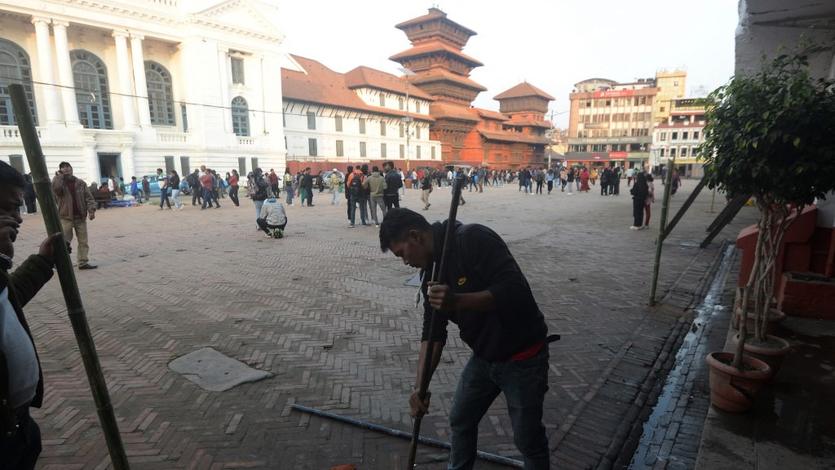 Workers prepare a polling booth ahead of the Nepal's general election, in Kathmandu on Nov 18, 2022. (PRAKASH MATHEMA / AFP)
Workers prepare a polling booth ahead of the Nepal's general election, in Kathmandu on Nov 18, 2022. (PRAKASH MATHEMA / AFP)
KATHMANDU - Nepalis were voting on Sunday in a general election where parties promised to bring down prices as inflation hovered at six-year highs.
The election pits the ruling alliance of the Nepali Congress party, led by Prime Minister Sher Bahadur Deuba and some former Maoist rebels, against the Nepal Communist Unified Marxist Leninist (UML) party.
The election pits the ruling alliance of the Nepali Congress party, led by Prime Minister Sher Bahadur Deuba and some former Maoist rebels, against the Nepal Communist Unified Marxist Leninist (UML) party
There are no pre-election polls, but political analysts expect the ruling alliance to retain power.
Polls close at 5 pm (1115 GMT), the Election Commission said. It could take up to two weeks to declare final results.
ALSO READ: Nepal earthquake kills at least six villagers, rattles New Delhi
About 18 million people are eligible to vote for the 275-member parliament and the 550 members of seven provincial assemblies through a mix of first-past-the-post and proportional representation systems.
In a video message, Deuba said voting would strengthen the nascent democracy. "Let us celebrate democracy by participating in voting," Deuba said.
Nepal has had 10 governments since the abolition of a 239-year-old monarchy in 2008. Political parties promised to bring down prices, create jobs and boost the economy at nationwide rallies.
The Election Commission has urged voters to cast their secret votes without fear of threat, intimidation and obstacle.
ALSO READ: Nearly 500 mountaineers issued permits for climbing in Nepal
"Voting is not only their right but also their duty to choose representatives through the secret ballot," Chief Election Commissioner Dinesh Thapalia told Reuters.
Analysts said a new government would face the challenge of reviving the economy and curbing high prices.
There are fears that a global recession might reduce remittances, which account for about a quarter of GDP.
READ MORE: Nepal calls November election as economy stumbles
Tourism, which contributed 4 percent to GDP before the pandemic, has yet to fully recover. In the first 10 months of this year, more than 450,000 tourists visited Nepal, less than half the number of pre-COVID visitors in all of 2019.
Foreign reserves are shrinking and retail inflation has been hovering at six-year highs of about 8 percent in the Himalayan nation, where one in five people live on less than $2 a day.


